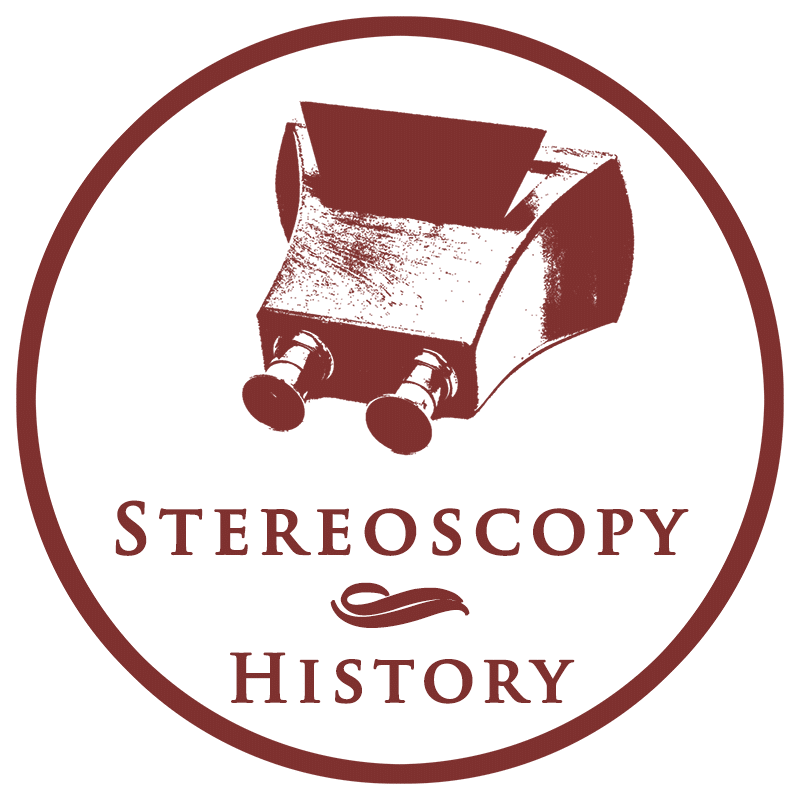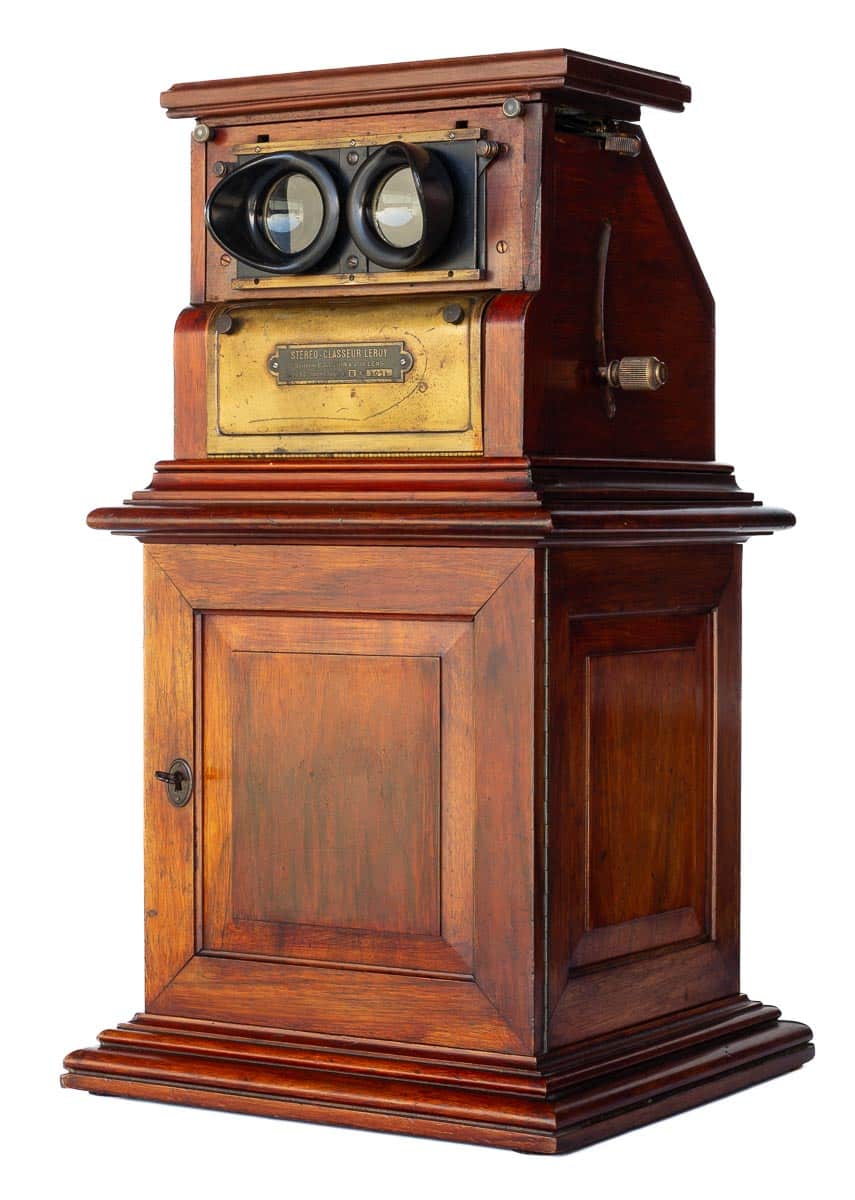
Le Stéréo-Classeur Leroy is a tray-based stereoscope that was designed by Guérin and De Lens and introduced in 1921. Émile Guérin had taken over Lucien Leroy’s company around 1919. Leroy had focused exclusively on the manufacturing of stereo cameras for more than twenty years. Leroy’s catalogue included stereoscopes from Mattey and Hemdé to complement the product range. Le Stéréo-Classeur Leroy was probably the first self-developed stereoscope of the company. Although Leroy probably played no role during the design phase, his name was linked to the new stereoscope. The name Leroy stood for high-quality photography products in France, and Guérin continued to use his name as brand.
Le Stéréo-Classeur Leroy is a compact stereoscope. The viewer part of the 6 x 13 cm model measures only 22 x 21 x 20 cm. It has a different mechanism compared to most similar tray-based stereoscopes. The glass slides are clamped and lifted by two gripping arms on the left and right side of the slide tray, instead of the more common system where images are pushed from a tray by a metal finger. The stereoscope could be purchased as a separate viewer or integrated with a storage cabinet for six slide trays (like the model in this post). The viewer was available for the formats 45 x 107 mm1, 6 x 13 cm and 7 x 13 cm.
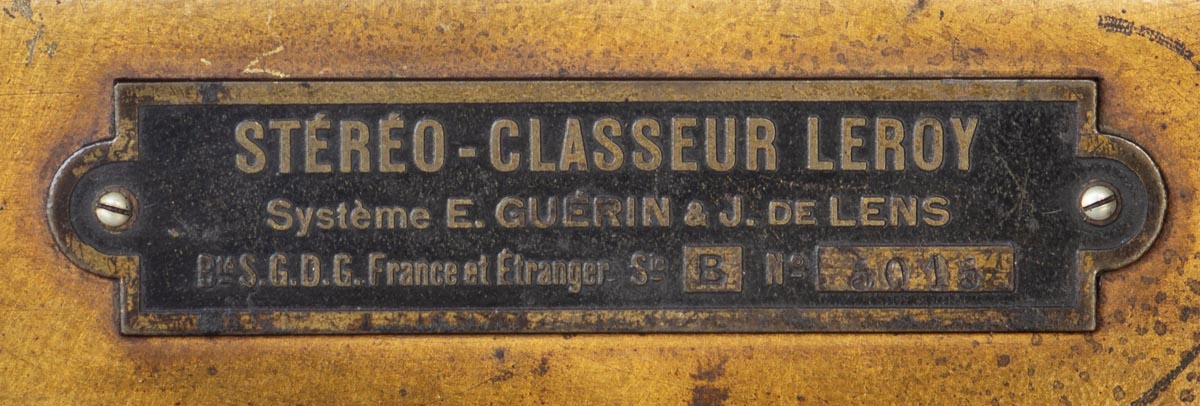
A quote and images from La Nature No. 2593 of 15 December 1923:
…immediately highlights one of the most interesting characteristics of this device, namely the small volume, the entire mechanism, extremely compact and robust, is arranged laterally and the slides, instead of being raised by a metal finger which lift them by their lower edge, are grasped by the sides by means of pliers which raise them to the height of the eyepieces, just as one would do with the fingers. We have thus eliminated all the space which is usually necessary to allow the metal finger to disappear when the plate descends into its groove, and produced a device which, for the 6 x 13 format, does not exceed 0.20 m. in any of its dimensions.
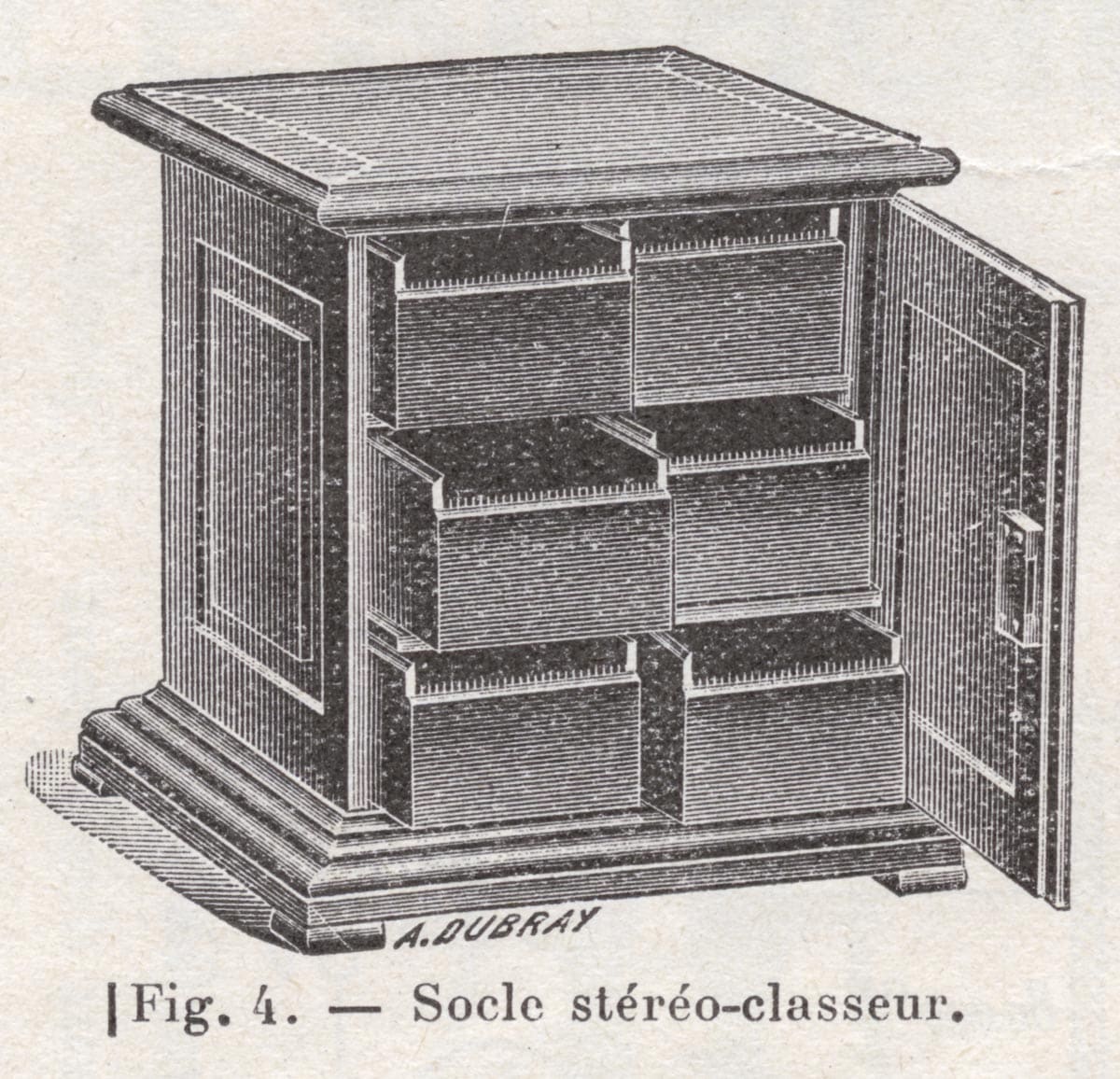
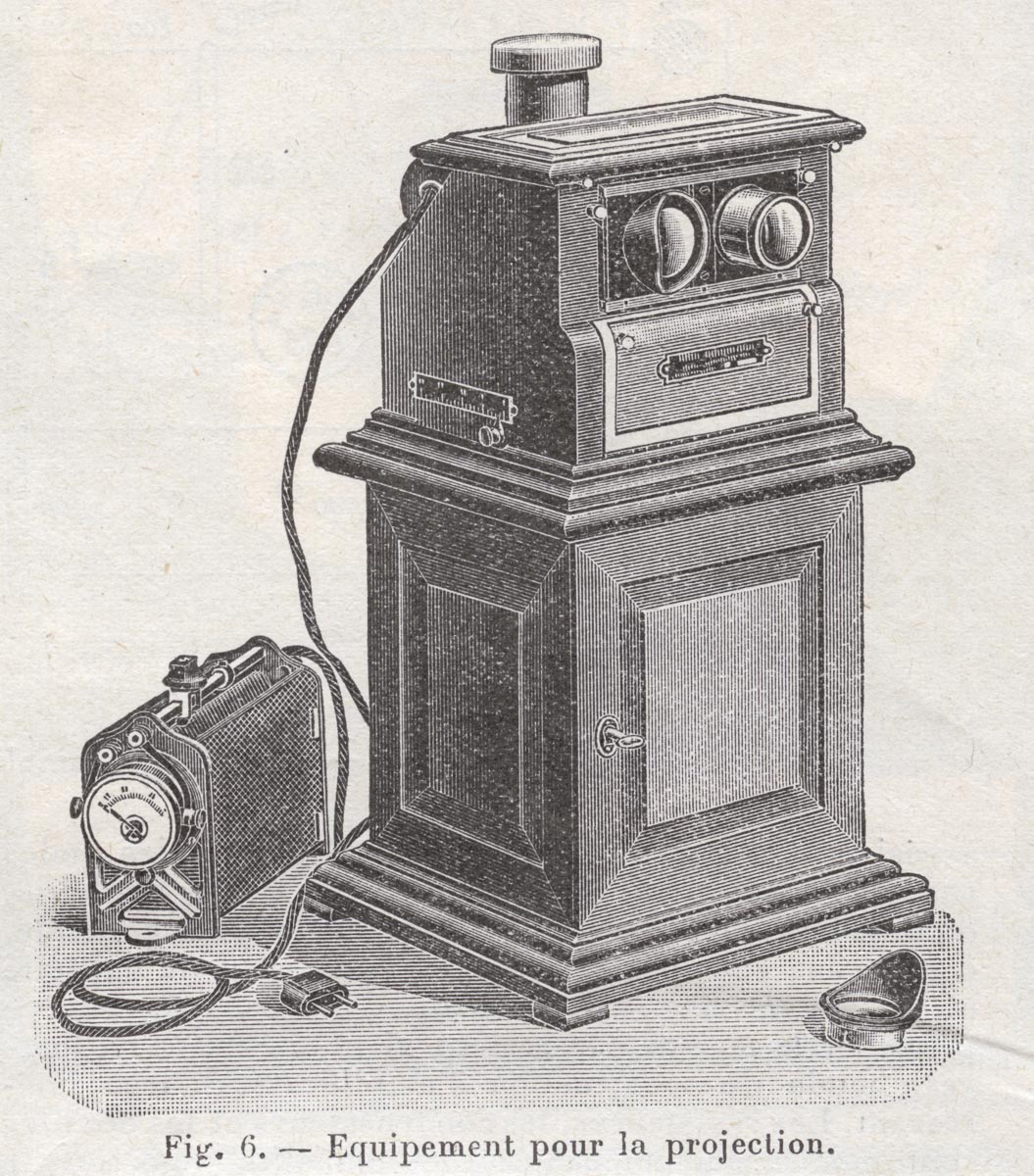
Specifications
| Manufacturer: | Émile Guérin, Paris |
| Year of introduction: | 19212 |
| Year of manufacture: | c. 1925 |
| Type: | Tabletop |
| Viewer: | Multi-view |
| Mechanism: | Tray-based |
| Bidirectional navigation: | No |
| Serial number: | 5015 |
| Stereoview support: | Glass |
| Stereoview format: | 6 x 13 cm |
| Number of slides: | 20 |
| Lens focussing: | Yes |
| Inter-ocular adjustment: | Yes |
| Eyepiece blinders: | Yes |
| Dimensions (L x W x H): | 22 x 21 x 20 cm (viewer) 26.5 x 25.5 x 47.5 cm (with cabinet) |
| Construction: | Walnut |
| Other features: | The lid to place the slide trays has a metal plate with Système E. Guérin & J. De Lens. The top lid and the panel with lenses can be removed from the device. |
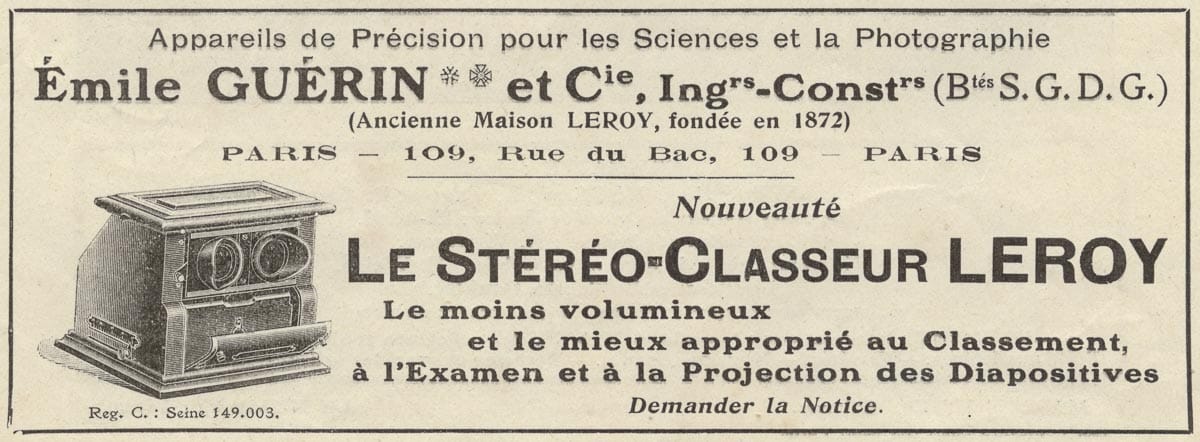
Glossary: inter-ocular adjustment / multi-view / tabletop / tray-based
Bazin, Leroy and Guérin
Charles Dessoudeix was a watchmaker. Dessoudeix’s company was founded in 1872, and located at 47, Rue du Rocher in Paris. In 1883, he helped Albert Londe with the development of a camera shutter. A year later, they presented their first shutter, branded Londe & Dessoudeix. Dessoudeix’s company was continued by Charles Bazin in 1891. Bazin partnered with Lucien Leroy, and together they introduced Le Stéréocycle, an innovative stereo camera that became very successful. Bazin left the company in 1899, and Leroy succeeded him. For more than 20 years, Leroy’s main focus was the manufacturing of the Stéréocycle and Stéréo-Panoramique stereo camera. Leroy partnered with Émile Guérin in 1916. Guérin took over the company in 1919 or 1920 and moved to 109, Rue du Bac in Paris. Guérin introduced new products to the company’s product line. New products continued to be introduced under the name Leroy. This was proof of Leroy’s strong reputation in France.
The complete story of Bazin, Leroy and Guérin
References
- Guérin E. (1921) Le Stéréo-Leroy, p. 6. ↩︎
- First found reference in Bulletin de la Société française de photographie (01-12-1921), p. 328. Via: gallica.bnf.fr ↩︎
